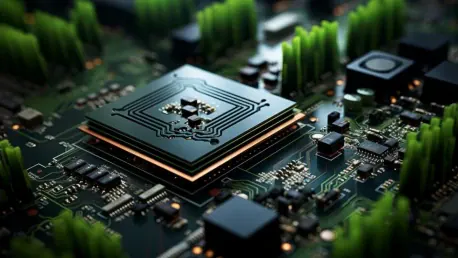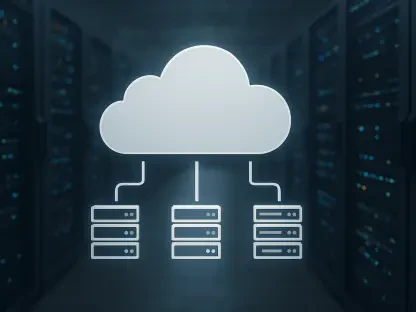In a significant step to enhance its AI capabilities, IBM Cloud has announced the launch of instances powered by Nvidia’s H100 GPUs. This marks a notable upgrade from its previous deployment of Nvidia A100 GPUs in 2023. These H100 instances promise a substantial boost in performance for AI workloads, delivering up to 30 times faster inference speeds compared to the A100s. This move aligns with IBM’s strategic focus on offering robust solutions for training complex AI models and executing large-scale inferencing tasks.
IBM Cloud’s new H100 instances are now available across its multi-zone regions, which include North America, Latin America, Europe, Japan, and Australia. Such wide regional distribution ensures that users worldwide can benefit from this enhanced computational power. Looking ahead, IBM plans to further expand its hardware capabilities by integrating Intel’s Gaudi 3 AI processors by early 2025, adding another layer of sophistication to its cloud offerings. Despite these advancements, it is worth noting that IBM remains slightly behind its competitors. Major cloud services providers like Amazon Web Services (AWS), Google, Microsoft, and Oracle had already launched H100 GPUs by September 2023. Smaller, specialized GPU cloud start-ups like CoreWeave and Cirrascale also had early access to these high-performance GPUs, intensifying competition in AI cloud services.
Broadening the GPU Portfolio
In addition to the powerful H100 GPUs, IBM Cloud is diversifying its GPU offerings to cater to a variety of AI workloads. For smaller-scale AI tasks and model training, IBM provides access to Nvidia L40S and L4 GPUs. These GPUs are optimized for jobs that do not require the immense power of the H100s, such as small-scale model training and chatbot deployment. This strategy allows IBM to offer a tailored solution for different AI needs, ensuring that their services appeal to a broader range of users, from those managing complex AI applications to those handling simpler, routine tasks.
The widespread availability of these GPU options across IBM’s multi-zone regions underscores the company’s commitment to providing versatile and high-performance cloud services. By early 2025, IBM’s introduction of Intel’s Gaudi 3 AI processors will further diversify its hardware portfolio, offering even more advanced options for AI tasks. While these expansions solidify IBM’s capabilities, the company continues to face stiff competition from other major cloud providers and emerging GPU cloud start-ups, all racing to offer the latest and most powerful technologies to their customers.
Looking Towards the Future
Anticipation is also building around Nvidia’s next-generation GPUs, the Blackwell line, which major cloud providers and start-ups are awaiting. Despite some initial design issues causing a slight delay, Nvidia aims to ship a substantial volume of these new GPUs in the latter part of 2024. This upcoming hardware is expected to push the boundaries of AI performance even further. IBM’s continuous efforts to stay abreast of these technological advancements highlight its commitment to being a key player in the AI and cloud computing sectors.
Moreover, IBM has been making notable workforce changes to adapt to its evolving business needs. The company has been discreetly implementing a layoff program, requiring affected employees to sign non-disclosure agreements (NDAs). Despite these layoffs, IBM maintains that its overall workforce numbers will remain relatively stable by the end of the year. Such restructuring is part of IBM’s broader strategy to optimize operations and integrate more automation and AI into its workflow. The company’s vision aligns with a broader trend in the tech industry toward automation and maximizing efficiency.
IBM’s ambitious AI agenda includes not only enhancing its cloud infrastructure but also transforming its workforce dynamics. The company has indicated that approximately 7,800 jobs could potentially be replaced by AI, reflecting ongoing trends in the tech industry. Companies are increasingly looking to leverage AI not just in products and services, but also in internal operations to achieve higher efficiency and cost-effectiveness. IBM’s dual focus on advancing its hardware capabilities and incorporating AI-driven changes within its workforce showcases its comprehensive approach to embracing new technologies and staying competitive in the rapidly evolving tech landscape.
Strategic Moves in AI and Cloud Computing
IBM Cloud has taken a major step to boost its AI capabilities by launching instances powered by Nvidia’s H100 GPUs. This upgrade follows their 2023 deployment of Nvidia A100 GPUs. The new H100 instances offer a significant performance leap, with up to 30 times faster inference speeds over the A100s. This move is part of IBM’s strategy to provide strong solutions for training complex AI models and running large-scale inference tasks.
These new H100 instances are now available in IBM Cloud’s multi-zone regions, including North America, Latin America, Europe, Japan, and Australia. This extensive regional coverage allows users worldwide to access enhanced computational power. Looking ahead, IBM plans to integrate Intel’s Gaudi 3 AI processors by early 2025, further enhancing its cloud offerings.
However, IBM is still a bit behind its competitors. Major cloud service providers like Amazon Web Services (AWS), Google, Microsoft, and Oracle had already introduced H100 GPUs by September 2023. Additionally, specialized GPU cloud start-ups like CoreWeave and Cirrascale secured early access to these high-performance GPUs, making the competition in AI cloud services increasingly intense.









